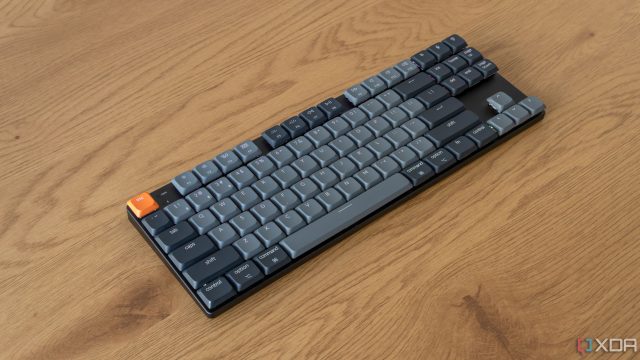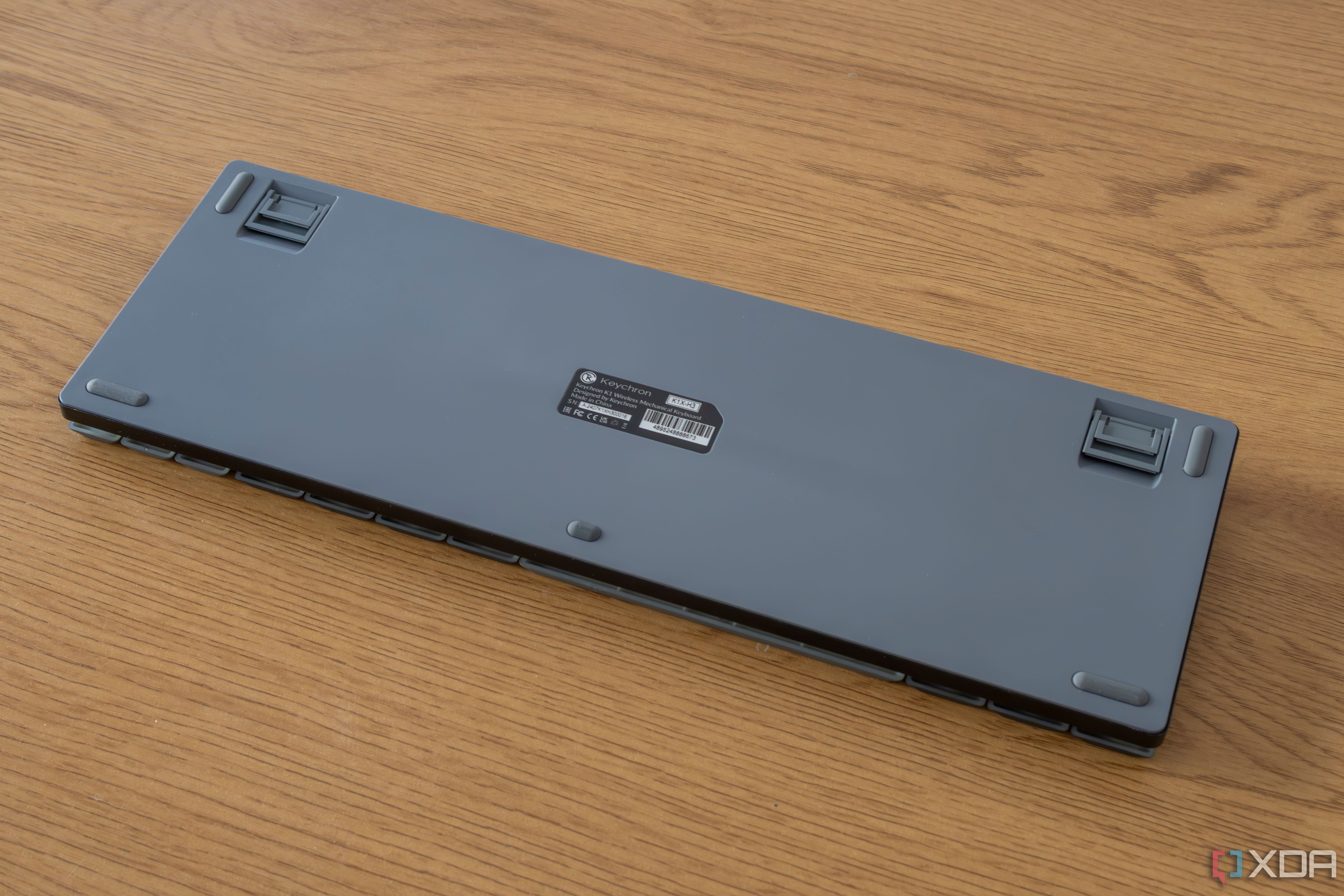It took me a while to love mechanical keyboards, but once I got into the swing of it, I couldn’t go back. Mechanical keyboards feel amazing to type on, and I love how silent and comfortable they can be. But I also don’t like how tall they and bulky they are. A keyboard like the Lemokey P1 HE I reviewed a while back is amazing, but it’s just so big.
Deep down, I love low-profile boards. Some time ago I had reviewed the Cherry KW X ULP and loved that super-thin form factor, and since then I’ve tried a few other keyboard with low-profile designs, such as the one I’m using as I type this, the latest Keychron K1. This is another mechanical keyboard with a low-profile design, and there’s a lot I love about it, but it’s also helped me realize that there’s just too much that’s been holding these keyboards back for me. I just want to see the “perfect” low-profile keyboard; is that too much to ask?
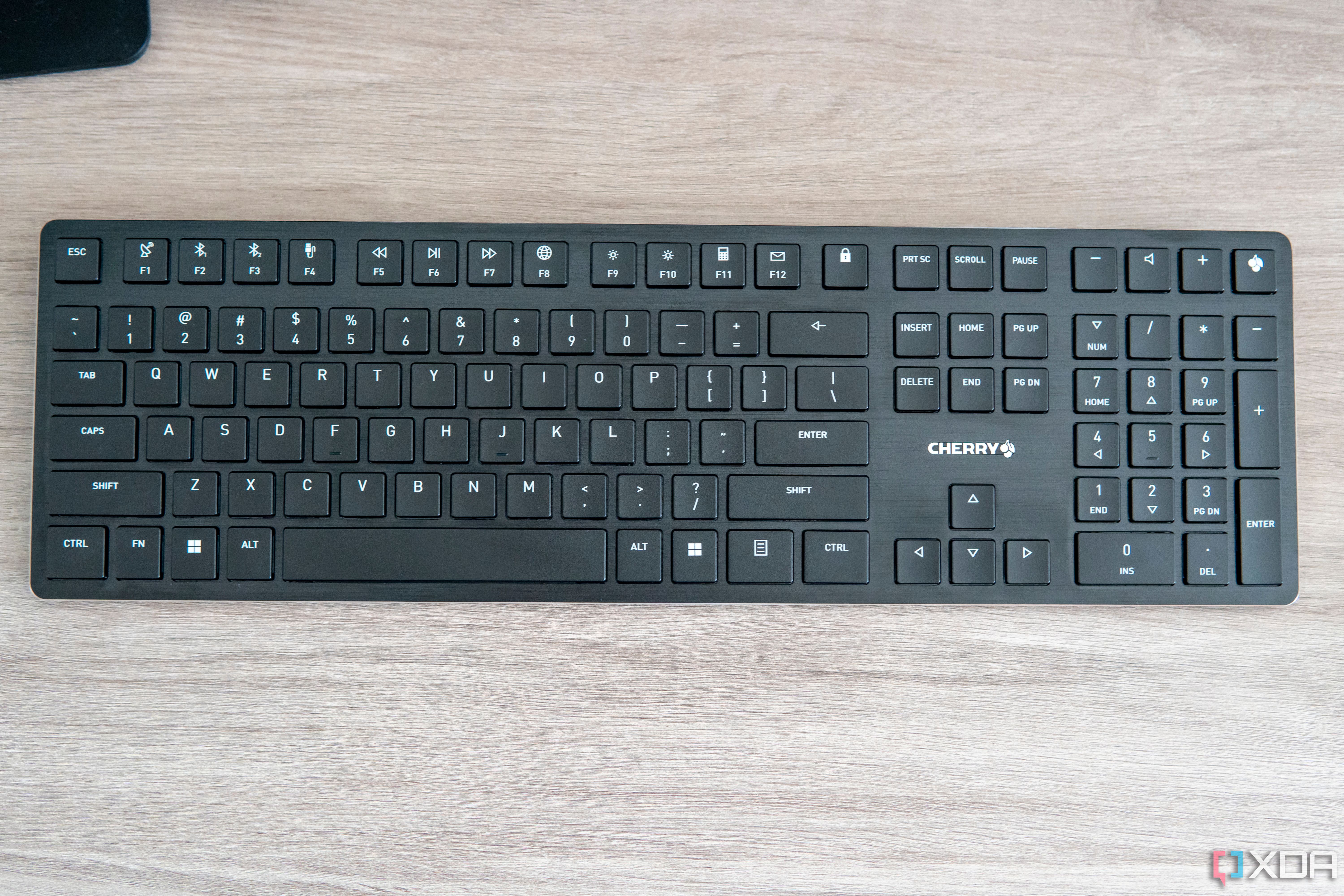
Related
Cherry KW X ULP review: One of the sleekest mechanical keyboards on the market
Cherry’s latest business keyboard is sleek and stylish, but the high price tag makes it hard to justify.
Low-profile is more comfortable
Premium keyboards are a little too tall for me
It’s hard for me to pinpoint exactly why I would prefer a low-profile keyboard over a larger one, but after using the Keychron K1 for a while, I realize it mostly comes down to the position of my wrists and fingers. With a full-height keyboard, I just feel like my wrists curve backwards a little too much, and it’s just a bit more effort to press and lift my fingers enough to type properly. It gets tiring and uncomfortable,
Low-profile keyboards like the Keychron K1 are just more approachable to me. They require a lot less effort to get my hands in the right position, and I feel like I can be a bit faster typing on one compared to a typical model. And thankfully, low-profile switches are popular enough for there to be a few variants, so while my unit came with brown switches, I could have swapped them for reds, which I prefer. It’s also just nice to have a keyboard that’s sleeker and lighter, and they can look pretty nice.
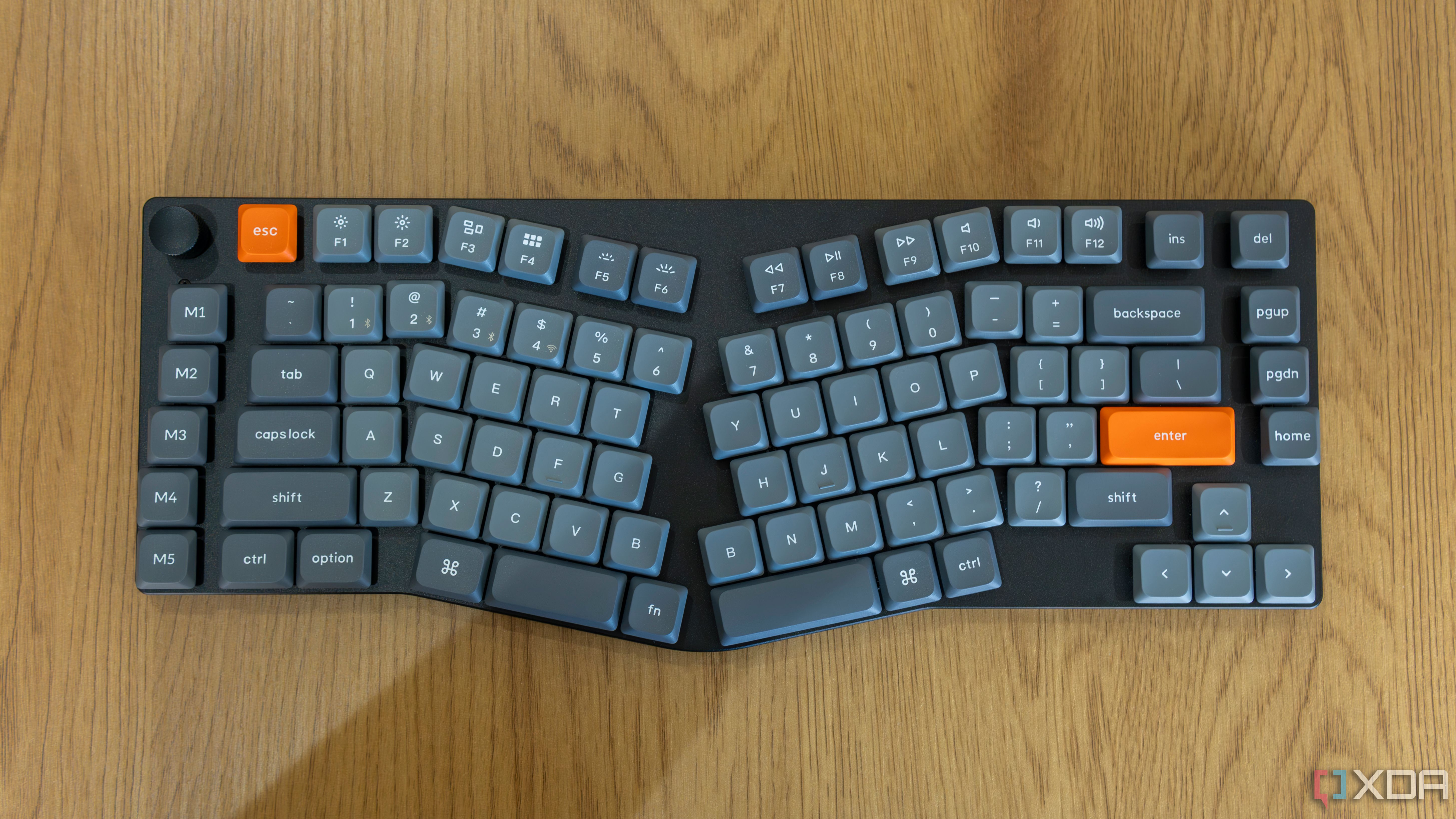
Related
Keychron K15 Max review: This keyboard wants to change how I type (but it probably won’t)
The Keychron K15 Max is my first ever Alice keyboard, and it forces me to change my typing habits a bit. But it won’t last after this review.
Why aren’t they as premium?
It’s always plastic
The big problem with low-profile keyboards I’ve tried is that they just don’t get the love that typical full-height boards get from manufacturers. The Keychron Q1 HE is one of the most premium keyboards I’ve ever used, and a big part of that is definitely the metal chassis. Both the top plate and the base of the chassis of this keyboard are made entirely of metal, and it makes this board feel significant. It’s heavy and thick, yes, but that most happens because the chassis feels like it’s made to be a weapon, and I mean that in a good way.
The metal chassis feels more premium, and it also helps absorb more vibrations compared to plastic. A plastic chassis will produce louder sounds while typing, which is why metal is so prevalent in more premium boards.
Unfortunately, none of the low-profile keyboards I’ve ever tested gets the same treatment. The Cherry KW X ULP is almost entirely made of plastic, and models like the Satechi SM3 and Keychron K1 do have a metal top, but the base of the chassis is still plastic, and it just leads to more noise and a keyboard that feels cheaper overall. I wish these low-profile keyboards got the same premium materials as their larger counterparts, because it would go a long way in making these worthy replacements.
Maybe I’m asking for too much, though. A lot of components go into good mechanical keyboards to help make them quieter, and you can’t fit all of that in a chassis that’s so much thinner. But it would be nice to see a more serious effort to make low-profile boards as good as they can be. I’d be fine with a slight compromise if the board needs to be slightly thicker than a typical low-profile keyboard.
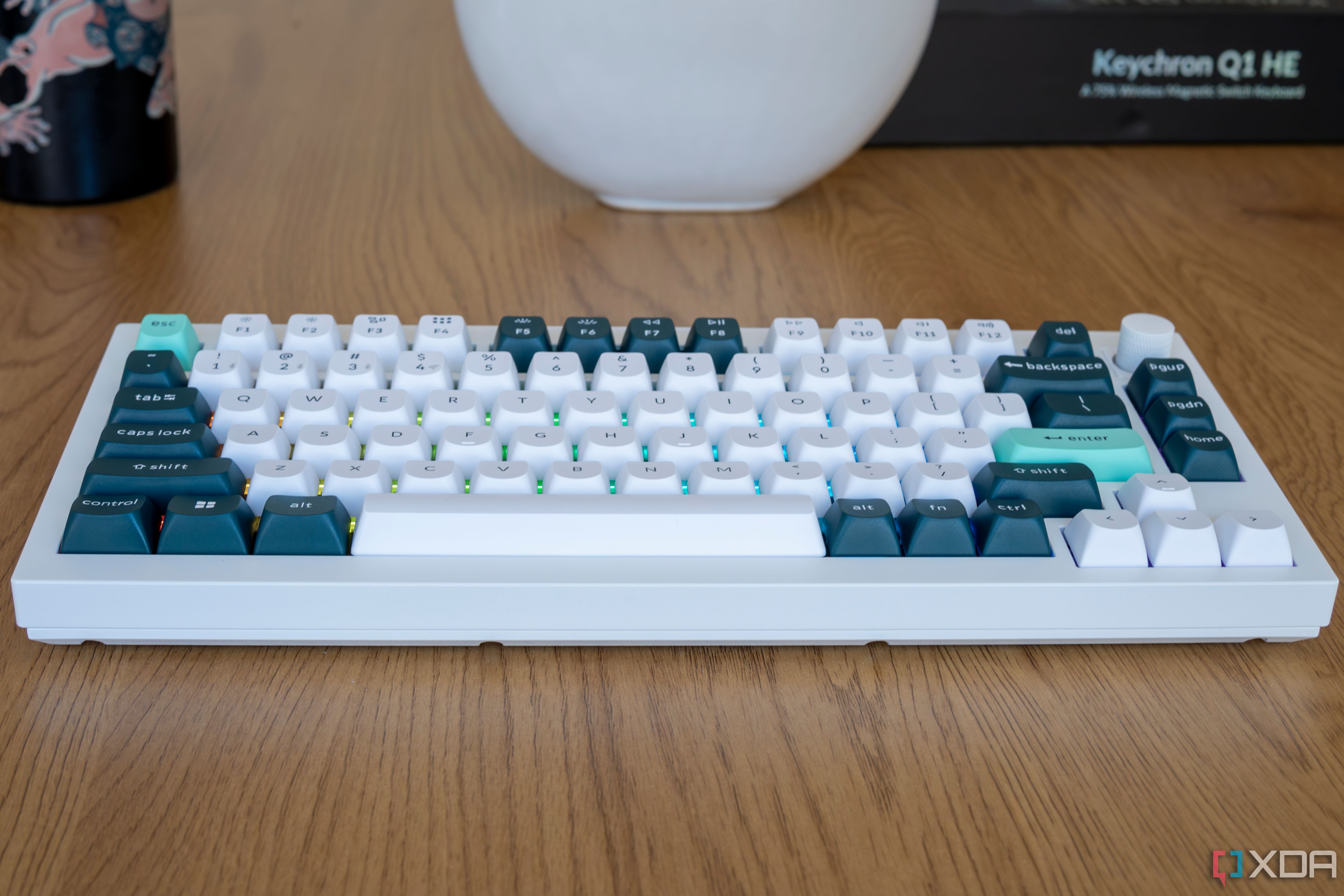
Related
Keychron Q1 HE review: The quietest and smoothest keyboard I’ve typed on
Keychron’s Q1 HE is its first keyboard with analog switches, and it’s a complete home run for typing or gaming.
Stripped-down features
We deserve better
As if the quality of the materials wasn’t already a downgrade, the Keychron K1 also cuts back on features compared to Keychron’s other boards. For example, I love having a volume wheel on the Lemokey P1 HE, but here, volume adjustments are just on the keyboard using keys. It works fine, but the volume wheel is way more tactile and fun, so it would be great to have a version for this kind of chassis.
What’s even more confusing, though, is the communication options. one of the best things about the majority of Keychron’s keyboards is that they work wired, via Bluetooth, or using a USB dongle, which is also the best way to do it. The Keychron K1 doesn’t support a dongle connection, so it has to be connected either through Bluetooth or USB, and that’s frustrating.
Bluetooth simply doesn’t work as well as using the dongle does, and I won’t hear otherwise. A big example I keep running into is that the keyboard takes longer to wake up and send a signal to the computer, so when I get back to my desk in the morning or after lunch, it takes a couple of extra seconds to get started. The Bluetooth connection also drops between entering my Mac password and getting to the desktop, so usually I have to wait a couple of seconds again while it reconnects. I never have this issue with a 2.4GHz dongle.
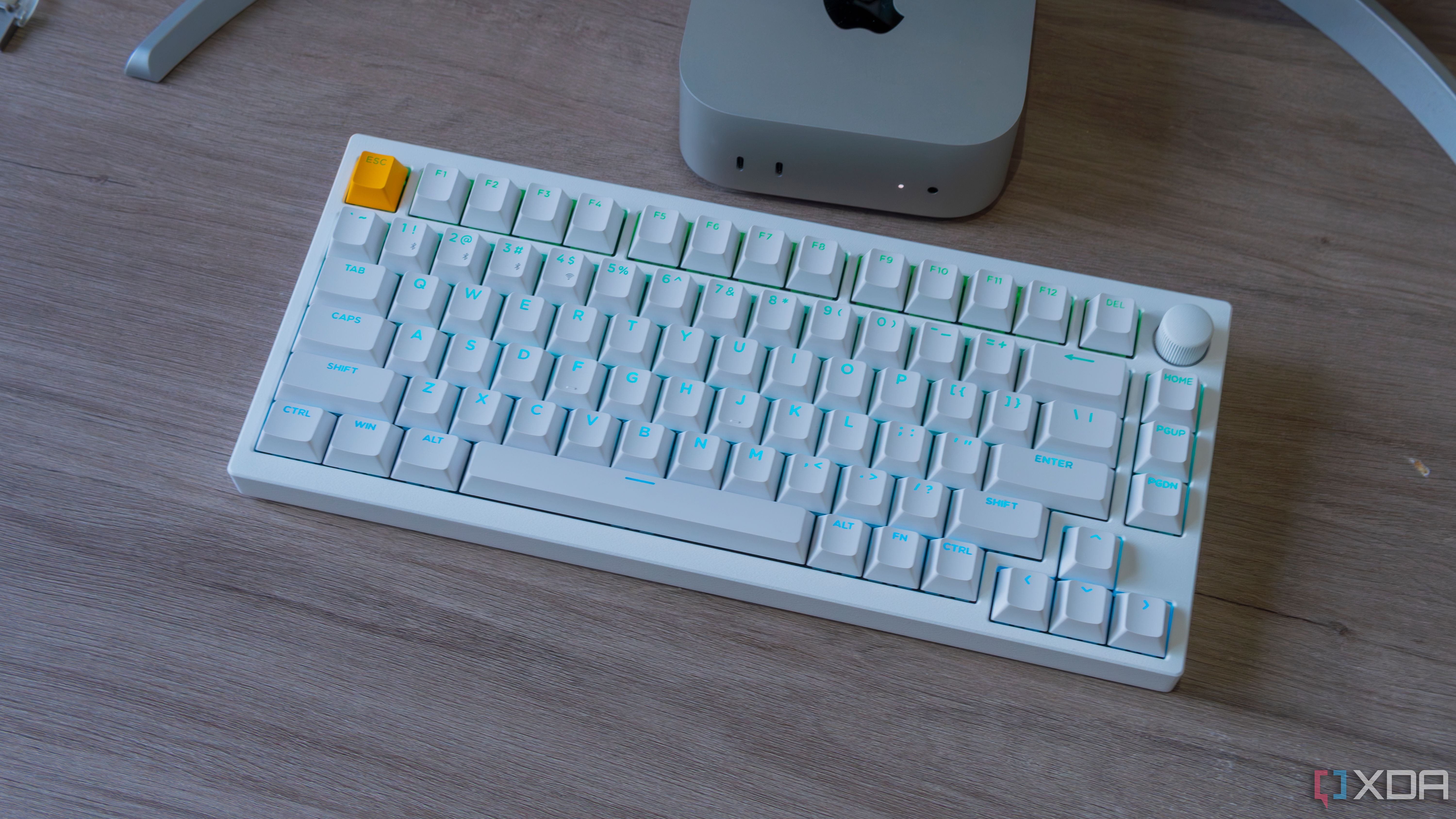
Related
Lemokey P1 HE review: A premium, beautiful gaming keyboard that feels (and sounds) great
Keychron gets another home run
What makes this even weirder is that Keychron still has the three-way slider for communication, but since there’s no 2.4GHz option, now the USB mode and Off options are two separate positions. Usually setting a keyboard to Off is what makes it work only via wired connection, but not here. And it’s not like Keychron can’t do this for its low-profile keyboards — the Keychron K15 Max does have a volume wheel and three communication modes. But that one has an Alice-style layout I’m not ready for.
I’ll keep waiting for a premium low-profile keyboard
In concept, low-profile keyboards are still more enticing to me than a big full-height keyboard, but I had high hopes for the Keychron K1 before I got my review unit, and was disappointed to find out it has many of the same shortcomings I’ve seen in other models. Keychron can make excellent keyboards, and I don’t get why low-profile designs get second-class treatment like this.
If there’s a properly premium low-profile keyboard out there, I’d love to check it out sometime. For now, I’ll keep waiting for Keychron to make something that blows me away. The Keychron K1 is good, but it’s not on the level I expect from the company.
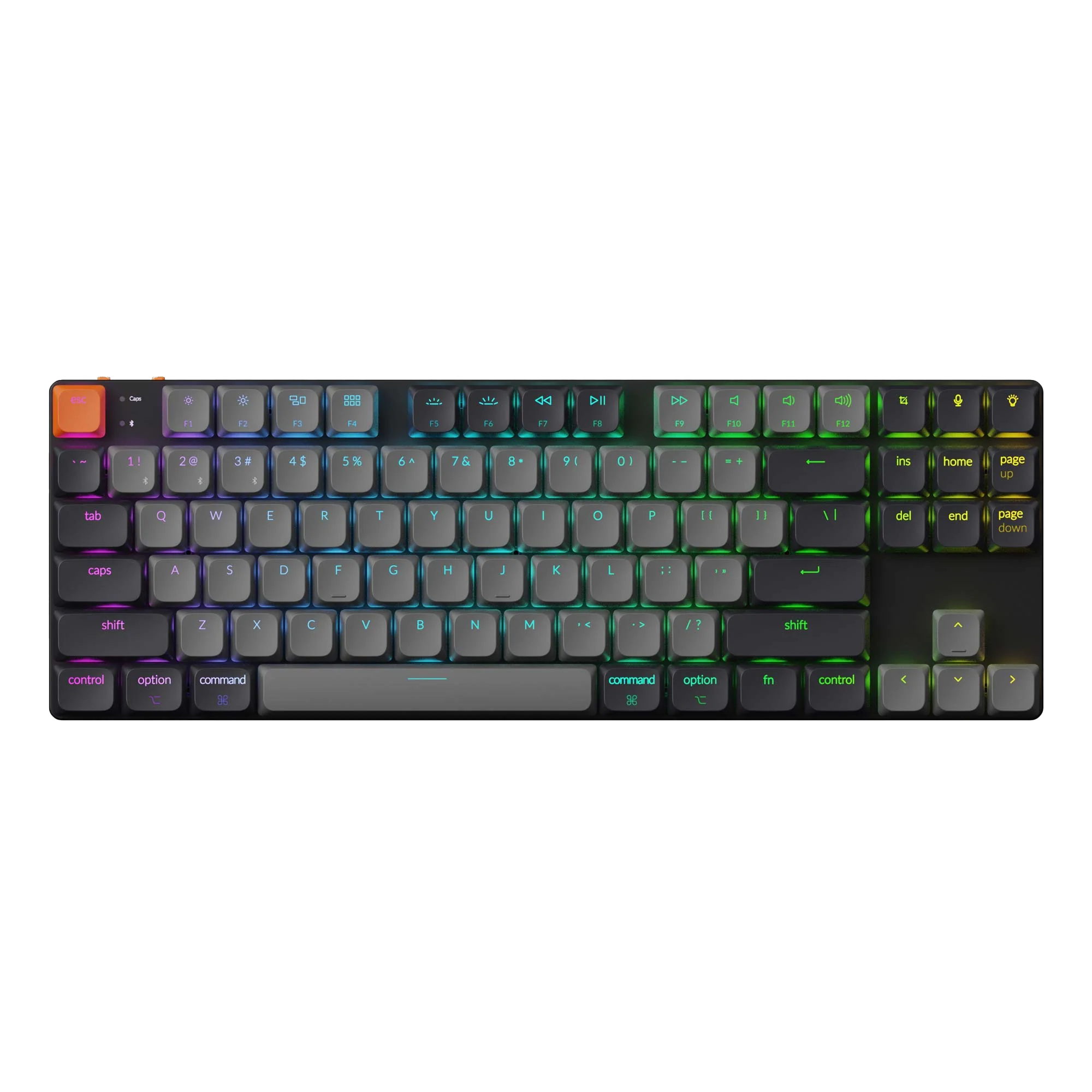
Keychron K1
The Keychron K1 is a low-profile keyboard that offers a solid typing experience, though it lacks some of the premium features of Keychron’s larger keyboards.


